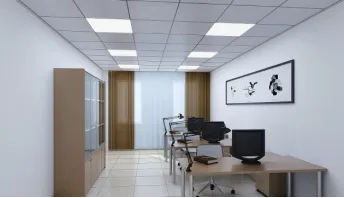Dec . 16, 2024 02:00 Back to list
drop ceiling main tee
Understanding Drop Ceiling Main Tees A Comprehensive Overview
Drop ceilings, also known as suspended ceilings, play a crucial role in both commercial and residential construction. One of the most significant components of a drop ceiling is the main tee, which is integral to the structure and support of the entire ceiling system. In this article, we will delve into what drop ceiling main tees are, their purpose, and how they significantly contribute to the aesthetics and functionality of spaces.
What are Main Tees?
Main tees are the horizontal support channels that run across the ceiling framework. Typically made of metal, these tees are designed to hold the weight of the ceiling tiles or panels that are installed within the grid system. The term “tee” refers to the T-shaped cross-section of these supports which allows them to efficiently distribute weight and provide a stable base for the ceiling.
The standard length of main tees is usually 12 feet, and they are available in various sizes and thicknesses to accommodate different design requirements. The most common profile is the 15/16 inch wide main tee, but other widths are also available depending on the type of ceiling tiles being used.
Purpose of Main Tees
The primary purpose of main tees is to create a sturdy support system for the ceiling panels. They are laid out in a grid pattern, forming the backbone of the drop ceiling. This grid layout allows for easy access to plumbing, electrical wiring, and HVAC systems, making it a popular choice in spaces where utilities need to be maintained or accessed frequently.
Furthermore, main tees contribute to the acoustic properties of a space. Many ceiling tiles are designed to absorb sound, and the main tees help create an effective barrier that minimizes sound transmission between rooms. This is particularly important in commercial environments like offices or conference rooms where noise levels can affect productivity and communication.
drop ceiling main tee

Installation of Main Tees
The installation of main tees involves a systematic approach. First, a level line is marked around the perimeter of the room to establish the desired height of the drop ceiling. Then, wall angles are attached to the walls, which serve as a guide for the main tees. The main tees are then suspended from the ceiling joists using hangers, ensuring they are spaced properly according to the grid layout.
Once the main tees are in place, cross tees are installed between the main tees to form a complete grid. Ceiling tiles can then be fitted into the grid, completing the drop ceiling installation. Careful attention to the alignment of all components is crucial, as any misalignment can affect the overall look and functionality of the ceiling.
Benefits of Drop Ceiling Main Tees
One of the primary benefits of using main tees in drop ceilings is flexibility. The grid system allows for easy installation and removal of ceiling tiles, facilitating maintenance and alterations to the space. Additionally, this system can incorporate various lighting fixtures, air vents, and other utilities seamlessly, enhancing the overall design.
Moreover, drop ceilings can conceal imperfections in the structural ceiling, such as pipes and ductwork, providing a clean and finished appearance. With various tile designs available, homeowners and designers have the flexibility to customize the aesthetic of a room while benefiting from the practical advantages of a drop ceiling.
Conclusion
In conclusion, drop ceiling main tees are fundamental components that provide structural support and flexibility to drop ceiling installations. They enhance both functionality and aesthetics in various settings, making them an essential element in modern construction. Understanding the role of main tees can help homeowners and builders make informed decisions when designing and installing drop ceilings in their spaces.
-
Quality Ceiling Trap Doors & Access Panels | Easy & Secure AccessNewsAug.30,2025
-
Durable Ceiling T Grid Systems | Easy InstallationNewsAug.29,2025
-
PVC Gypsum Ceiling: Durable, Laminated Tiles for Modern SpacesNewsAug.28,2025
-
Pvc Gypsum Ceiling Is DurableNewsAug.21,2025
-
Mineral Fiber Board Is DurableNewsAug.21,2025
-
Ceiling Tile Clip Reusable DesignNewsAug.21,2025







